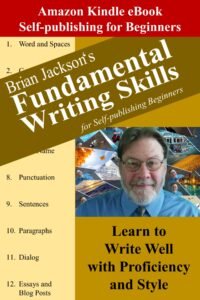Teacher to Johnny: What do you want to be when you grow up?
Johnny: A mystery writer.
Teacher: You need to have serious goals, Johnny. Now what do want to be when you grow up?
Johnny: (thoughtfully) A successful mystery writer.
That is my hope for you.
A few years back, after authoring eight mystery books, a friend asked me if I wanted to teach mystery writing at a local college. Within 6 months, I was instructing for-credit and non-credit (aka for fun!) students. To reach a larger audience, I compiled what I taught into five books: Writing the Killer Mystery series.
I want to share some of that here and in future blogs with you.
I like to start with the classic writers of mysteries. Most writers want to plunge immediately into the subject, but the classics are where this all started. These writers contributed so much. Understanding and applying their techniques is important if you want to be a successful mystery writer.
Here are a few of my favorites.
Edgar Allan Poe created a fictional detective C. Auguste Dupin. Most famously he is know for Murders in the Rue Morgue.
Sir Arthur Conan Doyle gave us Sherlock Holmes in short stories and novels, including A Study in Scarlet and The Hound of the Baskervilles.
Dame Agatha Mary Clarissa Christie is best known for fictional detectives Hercule Poirot and Miss Marple, appearing in over 66 books. Some well-known ones are Death on the Nile, Murder on the Orient Express, and The Mirror Crack’d from Side to Side.
Dashiell Hammett gave us Sam Spade and Nick and Nora Charles, who respectively appeared in The Maltese Falcon and The Thin Man.
Ed McBain authored a series called the “87th Precinct” which showcased twelve different detectives working in New York City.
These authors wrote a long time ago, and their works may be outdated. But so much of what we write today comes from their pioneer work. Learn from the masters. Read some of their works and that of others.
Here is a list of some things these six writers contributed to the mystery writing field.
“Deductive” reasoning (to solve the crime)
“Order and method” (to solve the crime)
Amateur detective
Armchair detective
Basing sleuths on actual detectives
Clues
Confession by the killer
Confronting the killer with evidence
Consulting detective
Cozy mystery
Eavesdropping
Eccentric sleuth
Hiding clues in plain sight
In-depth characterization of the sleuth
Intellect (to solve the crime)
Intuition (to solve the crime)
Legal/courtroom mystery
Look for worst in people
Means, Motive, Opportunity
Meddling
Multiple point-of-view narrations
Murder leads to punishment
Playing fair
Police detective
Police incapable of solving a murder
Private investigator
Reason and logic (to solve the crime)
Red herrings
Serialized mysteries
Sidekicks
Special skills for the sleuth
Thinking like the killer
This is the stuff that makes good mysteries. Learning the techniques is necessary to becoming a successful mystery writer.
This and more topics I will cover in these blogs. If you want to plunge ahead or just get a more in-depth view, please check out my book Writing the Killer Mystery: Great Beginnings available at Amazon.
Check out Ron’s Writing a Killer Mystery Series (5 Books) on Amazon Kindle.
—Ron


















